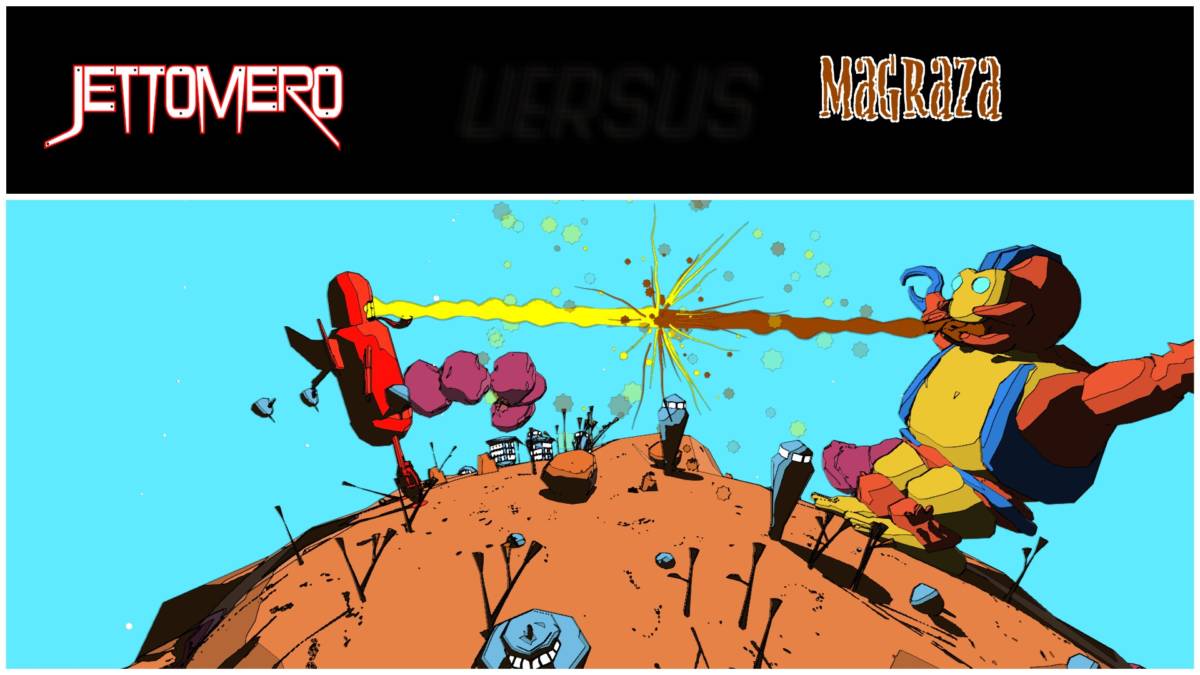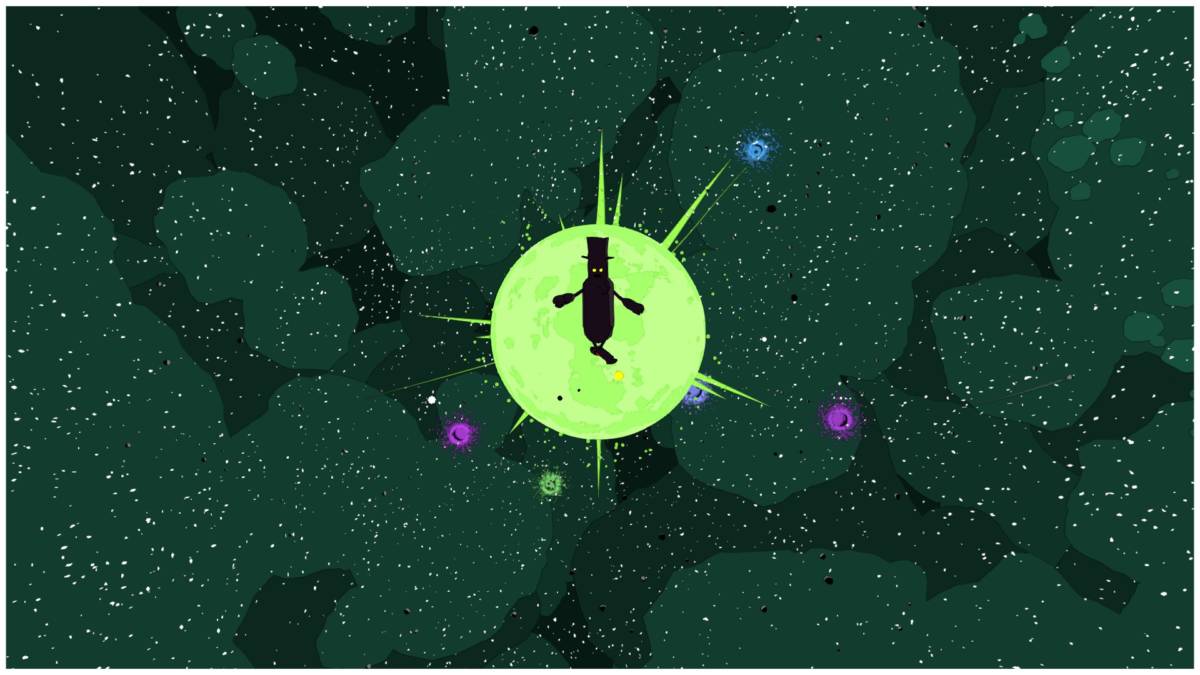Jettomero: Hero of the Universe is a largely one-man, Kickstarted effort by Gabriel Koenig, and sees players controlling the clumsy titular robot as he blasts from planet to planet, solar system to solar system via wormholes and the boosters in his legs. His journey is one of discovery, both of his own past and purpose as well as the reason all of these planets have hostile human colonies on them, and the origin and nature of the various boss monsters fought in each solar system.
The most obvious feature of Jettomero is of course its visual style – Koenig himself said he was inspired by the art styles of Jack Kirby and Hellboy artist Mike Mignola. The result is a striking aesthetic that is at once colorful and shadowy – every solar system and planet has a different color to differentiate it from the others, all illuminated by a star at the center as expected. Asteroids float lazily in your path, waiting to be broken open for meager fuel pickups, while comets leave their white streaks of cosmic dust for you to eat as they blow by, seeming to taunt you into flying off your objective to head them off and careen into them for a full refuel.
Every planetary body has a light and dark side, either of which is never more than a few steps away – the game is very much style over realism, and every planet is seemingly the same easily-navigable size, taking only a minute or two to circumnavigate. That is, of course, if you don’t get bogged down by the missiles, tow cables and other obstacles the tiny human residents throw at you.

As you stumble around each planet, you are looking for three chief items – fuel cells to power your lift-off capability (you thankfully have infinite juice to maneuver in space), customization options for Jettomero’s head, torso, arms and feet (purely cosmetic but highly entertaining nonetheless), and the real objective, the “monsters.”
Each of these monsters serve as the only real enemies you must face – the tanks, flying saucers and turrets of the human settlements can be entirely avoided, and you have no real means to actively attack them except stomping on the ground-based units. You do have control over each of your individual limbs to an extent – if playing on a controller as I recommend you do, the d-pad left and right will stomp with the respective leg, with up causing a jumping stomp. These destroy structures and dislodge new parts from the ground. The face buttons control Jettomero’s arms, which really just amounts to raising and lowering them – there is no real utility to it beyond making him flail his arms about as he walks and flinging the odd cable-tank when it snags your hand and tries to hold you in place.
The boss monsters, on the other hand, are fought in a button-press minigame where you clash laser eyes, with each successful sequence and follow-up button mash moving the center closer to your foe until they explode.

It’s not the most stimulating thing, and is in fact quite easy. When I eventually decided to fail on purpose, I was simply blasted back into orbit and told to drop in and try again. This is not an issue, ultimately, as Jettomero seeks not to challenge with deep combat, but to simply tell a story, share and experience.
After each boss battle, a simple rotating cipher puzzle must be solved to unlock a new memory, which plays out as a comic panel explaining an aspect of humanity’s past, Jettomero’s past or both. The story told through these panels, the small number of in-game character interactions and monologue from the hero himself isn’t a hugely innovative one, but much like the combat (or lack of) it doesn’t really need to be. It serves as a compelling backdrop to a quirky, clumsy robot’s lonely journey through space, trickling in answers while raising enough questions to keep everything going.
This journey is what truly matters as the centerpiece of what Jettomero tries to accomplish. Flying around the stylish and appealing cosmos, avoiding fuel-depleting gas clouds, chasing comets and trying very hard not to crush any buildings or tanks in search of answers and hats is fun while it lasts – which for Jettomero: Hero of the Universe is about 4 or 5 hours, max. The music is a catchy synthwave-ish fare, though the limited number of tracks does grow repetitive as the gameplay eventually does, but by that point you reach the endgame which changes things up a bit and drops some story tidbits that help you see it through.

Jettomero: Hero of the Universe is an experience I can and do endorse, with the caveat that extensive and fulfilling gameplay should not be your expectation. The game almost seems to know when it is about to lose you, because the endgame really does come at a perfectly calculated time. This is perhaps an unfortunate consequence of the game’s ability to instantly charm and hook you with its hero, design and audiovisual feast.
If blasting around a uniquely stylish series of solar systems to some catchy tunes as a naive, clumsy and funny robot with customizable parts while uncovering a dark past sounds like it could be a fun way to kill an afternoon or unwind after work, then Jettomero is worth your time and money.
All screenshots taken in-game by author.
Review code provided
Some of the coverage you find on Cultured Vultures contains affiliate links, which provide us with small commissions based on purchases made from visiting our site. We cover gaming news, movie reviews, wrestling and much more.



